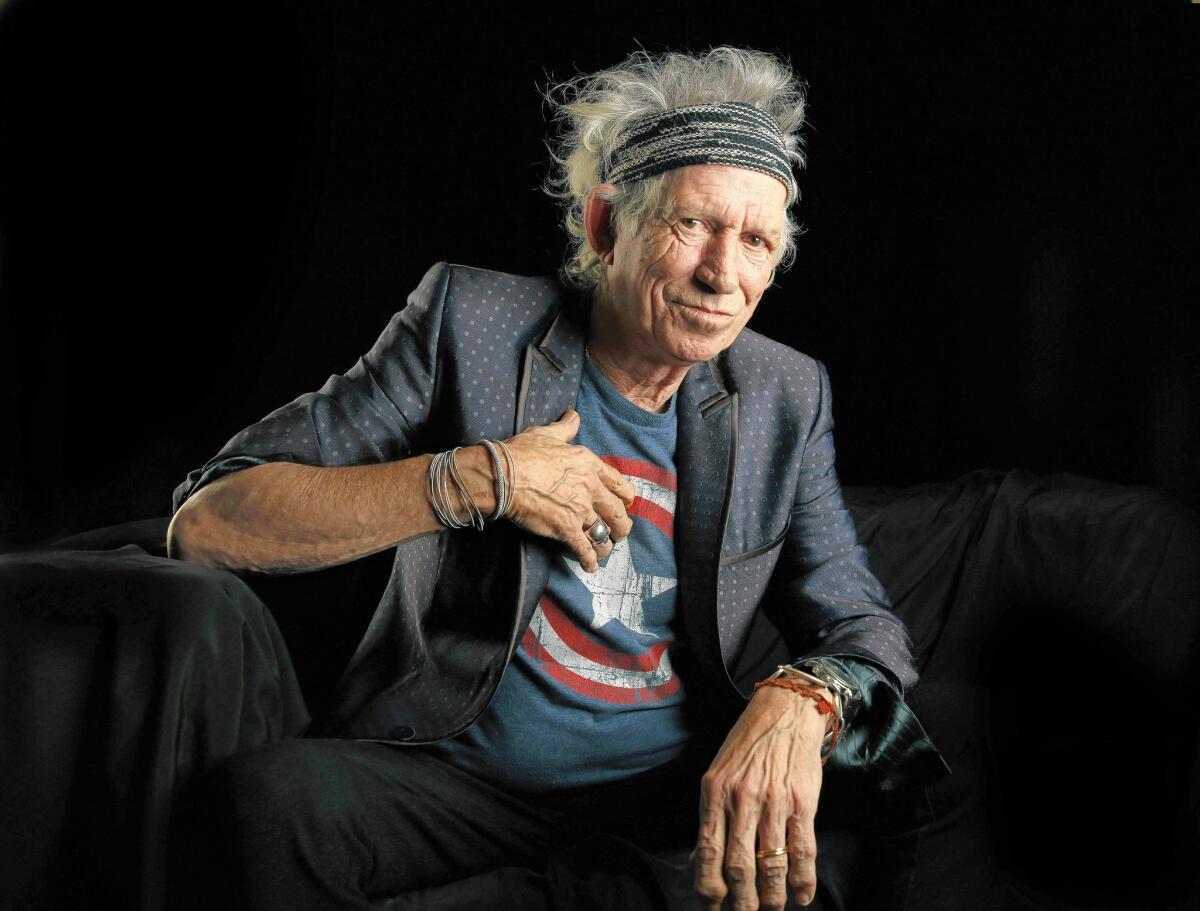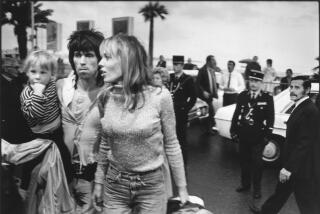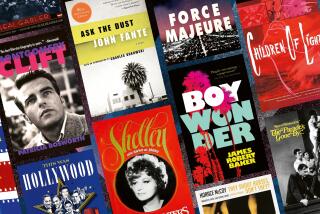33 1/3 essential books that rock

Legendary musician Keith Richards, seen here in August 2015, has a new solo-album coming out “Crosseyed Heart,” along with a documentary movie about his life.
Stories of sex, drugs and rock ‘n’ roll: These are the basic elements of a rock book. Make the band the Rolling Stones and you get “Life” by Keith Richards (2010), a memoir notable not just because the legendary guitarist lived through all those crazy exploits but because he remembers them. Focus in on N.Y. punk music scene and there’s nothing better than “Please Kill Me” (1996), the oral history by Gillian McCain and Legs McNeil; Jon Savage did British punk right in “England’s Dreaming” (1992). If you’re talking Riot Grrrls, the best history of the music and movement is Sarah Marcus’ ”Girls to the Front” (2010).
There are endless variations. When I asked people on Facebook their favorites, the list quickly topped 100, with a couple that came back for several encores (thanks to the hive-mind help, and the clear joy we all have in reading these books). These 33 and 1/3 books are those most essential in telling the story of rock ‘n’ roll in all its glamorous and dirty glory.
Among the most gloriously dirty: David Lee Roth’s “Crazy From the Heat” (1997), in which he philosophizes and airs Van Halen laundry when not reveling in his sins (“my personal record is five chicks at once”) and “The Dirt” by Mötley Crüe (2001), told with the aid of Neil Strauss, jampacked with all the porn stars, binges, overdoses, brushes with the law, stadium shows and depraved excess a hair band could want.
There’s a long history of telling tales of overindulgence. Stephen Davis’ “Hammer of the Gods” (1985), about Led Zeppelin, set the bar for lurid stories — but whether the bar is high or low depends on your point of view (the band has disputed the book). Guitar god Johnny Winter’s highs and lows, including a set at Woodstock and his genuinely venal management, are outlined in “Raisin’ Cain” (2010) by Mary Lou Sullivan. Writing about the Alice Cooper band in “Billion Dollar Baby” (1974), Bob Greene chronicled over-the-top backstage shenanigans and infighting. Marianne Faithfull, a pop star with a string of famous exes, tried again and again to quit drugs, as she wrote about in her revealing memoir “Faithfull” (1994).
Too many rockers were undone by drugs and alcohol. Ben Fong Torres told the story of Gram Parsons’ brief rise and decline (cause of death: alcohol and morphine) in “Hickory Wind” (1998). Janis Joplin’s accomplishments and many struggles (cause of death: heroin) were soon memorialized in “Buried Alive” by Myra Friedman (1973).
But there are the survivors. Patti Smith won the National Book Award for her memoir “Just Kids” (2010), which stops just short of her launching into rock stardom. Viv Albertine of the pioneering punk band the Slits roared back into public view after a long absence with her memoir “Clothes, Clothes, Clothes. Music, Music, Music. Boys, Boys, Boys.” (2014).
Crooner Leonard Cohen waited until he was 78 before deciding it was time for an authorized biography, “I’m Your Man” (2012) by Sylvie Simmons. And Nick Tosches has written so many music books no one can agree which is best, but for this list it’s the Jerry Lee Lewis bio “Hellfire” (1982).
Novelists have tried to turn rock into art too. There’s Jennifer Egan’s “A Visit From the Goon Squad” (2010), an innovatively structured Pulitzer Prize-winning novel built around the peripheries of the music business; Stacey D’Erasmo’s “Wonderland” (2014), about a forgotten indie sensation trying to return to the stage; Jonathan Lethem’s “You Don’t Love Me Yet” (2008) is about making music and art on the margins in L.A.; and Don Delillo’s “Great Jones Street” (1973) is the story of how Bucky Wunderlick, a rock star modeled on Jim Morrison and Bob Dylan, tries to duck the burdens of fame.
Dylan shared some of his secrets — albeit Dylanesquely — in “Chronicles Vol. 1” (2004) (the first in a planned but not yet published trilogy, this constitutes the one-third of this list). The Doors’ Morrison was remembered as being frequently drunk in bandmate Ray Manzarek’s “Light My Fire” (1998).
Like Manzarek, Peter Hook was in a band with a powerful singer who died young; he waited more than 20 years after the demise of Joy Division to write about it in “Unknown Pleasures” (2013).
Often, those close to fame wind up telling the stories. With her husband Warren’s urging, Crystal Zevon gleefully dished the dirt with his friends for his biography, “I’ll Sleep When I’m Dead” (2008). In “I Slept With Joey Ramone” (2009), Mickey Leigh, the rocker’s brother, recalls the band’s early days and successes. His title was a play on groupie brags, and no groupie bragged with more delight than Pamela Des Barres in “I’m With the Band” (1987), putting Jimmy Page at the top of the rock-star-slash-lover heap. Sharing a different kind of secret, Tony Sanchez procured-and-told; he turned eight years of running errands for Keith Richards into “Up and Down With the Rolling Stones” (1979).
Fame is a theme, but not all great music narratives are about being famous. When Black Flag was touring the country in the early 1980s, it was a small independent punk band — a moment that was captured firsthand by singer Henry Rollins in “Get in the Van” (1994). The musicians appearing in Michael Azerrad’s “Our Band Could Be Your Life,” about the indie scene of the ‘80s, only now appear in boldface. The Throwing Muses’ Kristen Hersh recalled being young, pregnant and suddenly almost famous in “Rat Girl” (2010). And as unassuming Jacob Slichter recounts in “So You Wanna Be a Rock N Roll Star” (2004), having an unexpected hit with Semisonic set the clock ticking on his 15 minutes of pop fame.
And it turns out people who like to read about rock exploits also like a little criticism in the mix. The most gonzo of all rock critics was, of course, Lester Bangs (accidental overdose), whose writings were collected posthumously in “Psychotic Reactions and Carburetor Dung” (1988). More academic and genuinely seminal is Greil Marcus’ “Lipstick Traces” (1989), one of the first books to turn a cool scholarly lens on the madness of rock and its place in the culture. Afterward came Simon Reynolds, whose books include the post-punk chronicle “Rip It Up and Start Again” (2006), which seems almost like a command for a list about books about rock ‘n’ roll.
carolyn.kellogg@latimes
More to Read
Sign up for our Book Club newsletter
Get the latest news, events and more from the Los Angeles Times Book Club, and help us get L.A. reading and talking.
You may occasionally receive promotional content from the Los Angeles Times.









